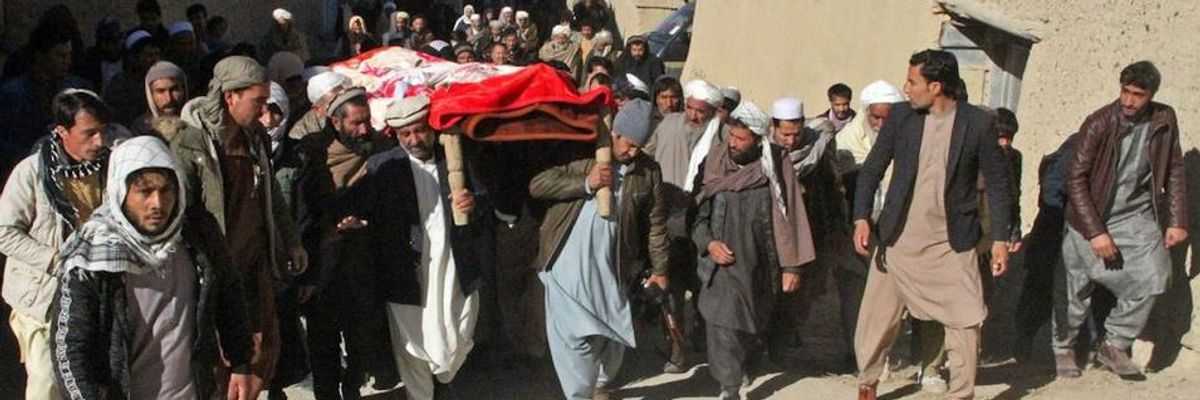In what one leading advocate called "a failure by the international community," the number of journalists murdered in retaliation for their work more than doubled in 2020, according to a report published Tuesday by the Committee to Protect Journalists.
"It's appalling that the murders of journalists have more than doubled in the last year, and this escalation represents a failure of the international community to confront the scourge of impunity."
--Joel Simon, CPJ
CPJ's annual report contains a database of 30 journalists who were killed in 15 countries during the course of the year. Of these, six died while working "dangerous assignments," three were caught in the crossfire during the ongoing Syrian civil war, and 21 were murdered.
Afghanistan and Mexico suffered the most journalist murders in 2020, with four each. Illegal firearms--many trafficked from the United States--have reportedly been used to kill reporters in Mexico, where drug war violence has fueled a nearly doubling of the nation's overall homicide rate over the past five years.
These two countries are followed by the Philippines with three murdered journalists; India and Honduras with two; and one each in Bangladesh, Iran, Paraguay, Somalia, Syria, and Yemen.
The death of a fifth Afghan journalist, Rahmatullah Nekzad--who was gunned down as he left his Ghazni home to attend mosque on Monday--did not make the list, as it is still under investigation.
CPJ said that all 21 murdered journalists were slain in targeted killings it called "direct reprisals" for their work, an increase from 10 such murders in 2019.
"It's appalling that the murders of journalists have more than doubled in the last year, and this escalation represents a failure of the international community to confront the scourge of impunity," CPJ executive director Joel Simon said in a statement accompanying the report's publication.
The most recent murders listed on CPJ database are those of Hussein Khattab, a Syrian reporter for the Turkish state-owned broadcaster TRT Arabic who was assassinated by masked men on a motorcycle in Al-Bab, Syria on December 12; Roohollah Zam, who was executed in Iran on December 12 for covering anti-government protests; and Malala Maiwand, who along with her driver Mohammad Tahir was shot dead on her way to work at Enikass TV and Radio in Jalalabad, Afghanistan earlier this month.
CPJ said it is currently investigating the killings of 15 other journalists this year to determine whether they were slain for reasons related to their work.
Last week, CPJ also reported that a record number of journalists are being jailed around the world, many for reporting on the Covid-19 pandemic or political uprisings.
"The fact that murder is on the rise and the number of journalists imprisoned around the world hit a record is a clear demonstration that press freedom is under unprecedented assault in the midst of a global pandemic, in which information is essential," Simon said. "We must come together to reverse this terrible trend."
If there is a silver lining to the latest CPJ report, it is that the number of journalists killed covering wars and other military conflicts fell to its lowest level of the century, although at least four reporters died in war-torn Afghanistan and Syria.

